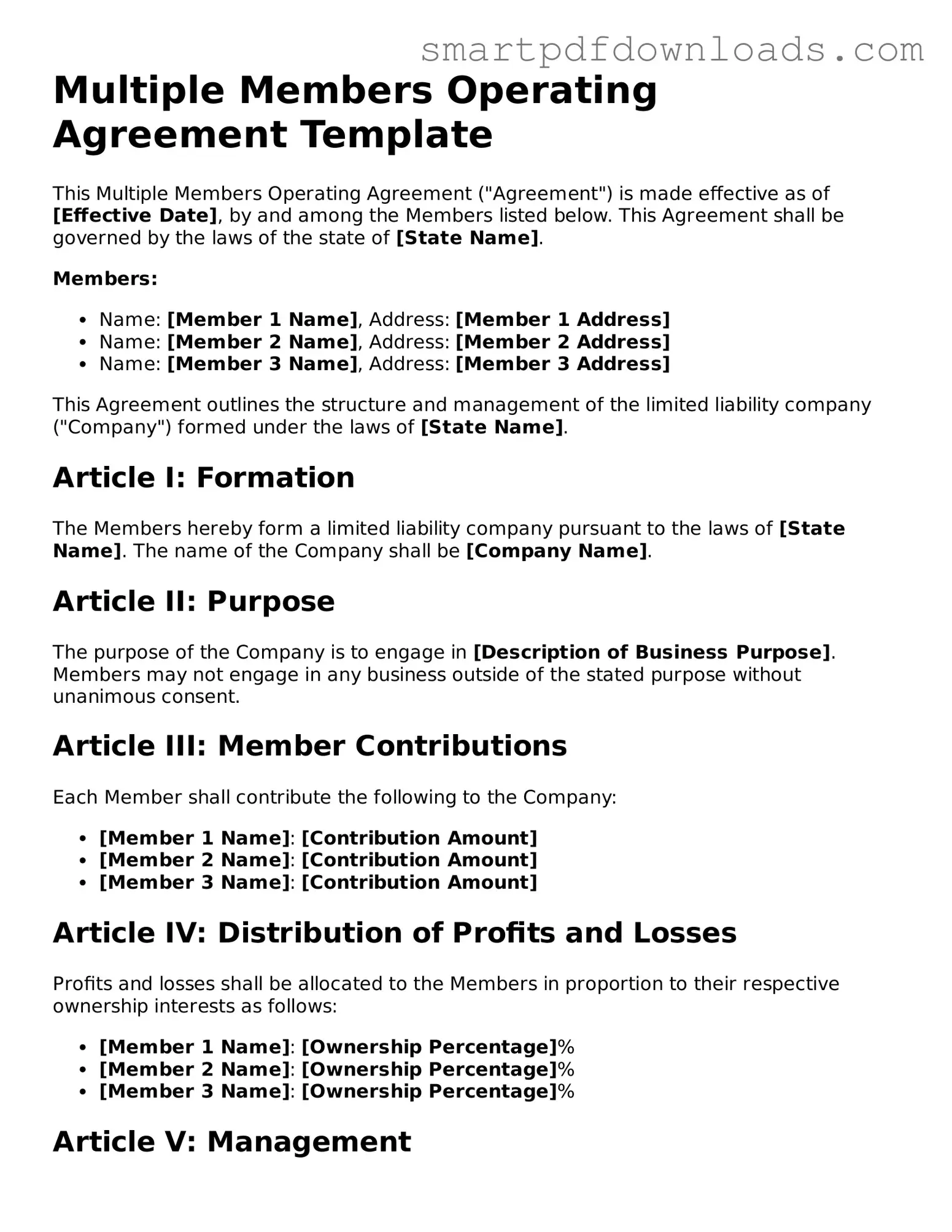Multiple Members Operating Agreement Template
This Multiple Members Operating Agreement ("Agreement") is made effective as of [Effective Date], by and among the Members listed below. This Agreement shall be governed by the laws of the state of [State Name].
Members:
- Name: [Member 1 Name], Address: [Member 1 Address]
- Name: [Member 2 Name], Address: [Member 2 Address]
- Name: [Member 3 Name], Address: [Member 3 Address]
This Agreement outlines the structure and management of the limited liability company ("Company") formed under the laws of [State Name].
Article I: Formation
The Members hereby form a limited liability company pursuant to the laws of [State Name]. The name of the Company shall be [Company Name].
Article II: Purpose
The purpose of the Company is to engage in [Description of Business Purpose]. Members may not engage in any business outside of the stated purpose without unanimous consent.
Article III: Member Contributions
Each Member shall contribute the following to the Company:
- [Member 1 Name]: [Contribution Amount]
- [Member 2 Name]: [Contribution Amount]
- [Member 3 Name]: [Contribution Amount]
Article IV: Distribution of Profits and Losses
Profits and losses shall be allocated to the Members in proportion to their respective ownership interests as follows:
- [Member 1 Name]: [Ownership Percentage]%
- [Member 2 Name]: [Ownership Percentage]%
- [Member 3 Name]: [Ownership Percentage]%
Article V: Management
The Company shall be managed by [Member Name or Management Structure]. Decisions will require a majority vote unless specified otherwise in this Agreement.
Article VI: Meetings
Regular meetings shall be held at least once a year. Special meetings may be called as necessary. Notice of meetings shall be provided to all Members at least [Notice Period] prior to the meeting date.
Article VII: Indemnification
The Company shall indemnify and hold harmless each Member from any losses or damages incurred as a result of their role with the Company, to the fullest extent permitted by law.
Article VIII: Amendments
This Agreement may be amended only with the written consent of all Members.
Article IX: Miscellaneous
This Agreement constitutes the entire understanding between the Members and supersedes all prior agreements or understandings.
IN WITNESS WHEREOF, the undersigned have executed this Agreement as of the date first above written.
_____________________________
Signature of [Member 1 Name]
_____________________________
Signature of [Member 2 Name]
_____________________________
Signature of [Member 3 Name]
